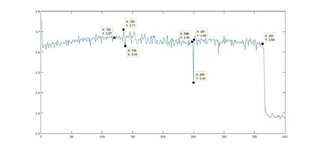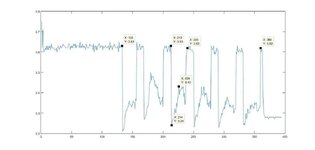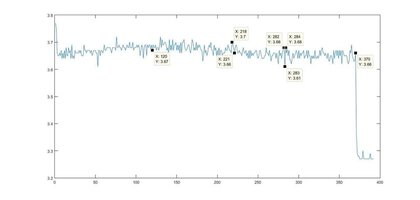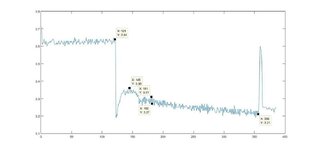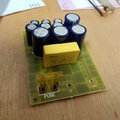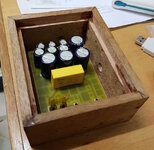Hello fellow petrol heads.
I too have developed my own voltage stabilizer (VS) but I've been quiet about it because of how the public reacts to these devices. No it is not a miracle device that will solve all your electrical stability problems, however it does help.
I built one of these devices because my friend basically threw his broken VS at me and told me to fix it. So I took it apart, analyzed it and figured I could make it better. Having solved his device, I then began designing my own. It is hard to emulate this device with software as a 12V car battery undergoes charging upon acceleration of the throttle (it supplies current and recharges). After going through many analogue builds and testing, I came up with my own device.
Here are some
specifications of the device and the capacitors (Japan made) that I use:
- Total capacitance: 18000uF ± 20%
- Operating max temperature: 105°C
- Operating min temperature: -55°C
- ESR per capacitor: 0.104Ω
- Voltage rating of capacitor: 16V
- Current consumption: 7 - 8mA
Now let me begin to
explain my device:
Let us begin with a YES; it is only 18000uF but its basically all you need. 16V as a voltage rating for capacitors is all you need as the battery will never reach this value. At a max operating temperature of 105°C, the capacitors will last longer in a car's engine bay as operating conditions can get hot. ESR stands for equivalent series resistance; typically the lower the resistance the better the flow of charge.
Let me explain and show my
data behind it (I will try to make it as simple as I can to be understood):
Read this to make sense of the data:
The y-axis is the voltage of the battery and the x-axis is the time. The battery's 12V is attenuated to 1/4 (0.25) of its value to be measured. Example: 3.8 on the y-axis is 15.2V.
The time is sampled with a resolution of 500ms (half a second). Example: 120 on the time scale is 60 seconds in reality.
Test conditions:
The first 120 on x-axis (60 seconds) the car's engine is kept at acceleration or left to idle. From 120 to 360 on x-axis (the next 120 seconds) the car's engine is kept at acceleration or left to idle, the air con is on full, the lights are on full, and the radio is blasting music. This is the excitation period.
Here are two images of the 12V battery under acceleration and stationary conditions
without device and grounding cables:
Figure 1 - Acceleration condition where the engine is kept at 2.5k rpm.
Under acceleration conditions, the oscillations are 200mV or less which is fine. You'll notice a dip between 248 and 251 on the x-axis. This is when the air con fan turns on.
Figure 2 - Stationary condition where the engine is kept at idle, typically around 0.9k rpm for stock cars.
Upon the excitation period, you'll notice huge jumps of the curve. These oscillations are 1.59V and are bad for power supply applications.
After plugging in my device and grounding cables:
Figure 3 - Acceleration condition with device and grounding cables where the engine is kept at 2.5k rpm.
As you can see, the curve with and without the device and grounding cables are pretty much the same. Even recovery from the fan excitation is the same. This is good.
Figure 4 - Stationary condition with device and grounding cables where the engine is kept at idle, typically around 0.9k rpm for stock cars.
Now you notice the oscillations before the device and grounding cables have been smoothened in this data set. This is because the device is doing its job by absorbing and releasing charge evenly to obtain a good power supply.
Overall explanation:
As you can see from the before and after, my device and grounding cables does smoothen the power supply. Now to debug some notions the public has regarding these products.
1) Having a higher capacitance doesn't make your device better. Yes the device stores plenty of charge and smoothens the system. However under acceleration, the induction coil is the highest current consumer. As the engine revs higher and higher the demand of charge by the induction coil increases till red line. Hence its a varying load. Now the VS is a load in the system as it stores charge. This is basic electrical engineering. Now what you must consider is the time response of the device. With high capacitor values used and a large capacitance, the response time of the VS becomes the bottle neck of the system under high rpms.
V(t) = Q(t)/C, where V(t) is voltage with relation to time, Q(t) is charge with relation to time and C is capacitance formula.
This formula explains what I'm referring to because it takes a capacitor time to charge, the higher the capacitor value and total capacitance value, the longer it takes to charge. Dispersing the charge is not in question, only charge time; and you can easily find the curve for this if you google "charge time of capacitor". So for low rpm revving situations, a device with high capacitance will suit you well; however at high rpm levels, you will notice your engine begins to slow its revving capability.
To put it simple, at low rpm you will notice slight improvement in torque and speed. However at high rpm, you will notice your car is slower than without the device and grounding cables. My device, helps the bottom end of the rpm without having to affect the top end of the rpm response. This is why I don't use high capacitance or large capacitor values.
2) Devices sold in the market do work. However they don't tell you how to make the most of it. As known in basic electronics, components perform best at room temperature and not high temperature environments (unless designed to do so). Hence always store your VS in the coolest place that is closest to your car battery. I know this for fact because I have had the misfortune of plugging my device close to the back of the radiator fan which disperses high heat. This reduced the stabilizing ability of my experimental VS system.
3) "You'll notice big changes" is a horrific notion that has entered the minds of consumers. Yes, there is an improvement however it has been heavily overplayed and marketed. Now... where to begin... right, your car's current consuming items are typically designed to operate with specific voltage and current. Without a VS device they do work, however their not working at 100%. VS systems and grounding cables help stabilize the voltage which stabilizes the current supplied bringing it closer to its designed operation point.
V=IZ, where V is voltage, I is current and Z is impedance.
Impedance is the current consuming items. Assuming impedance is a constant, voltage and current are directly proportional. Thus, stable voltage equates to stable current supplied. In reality impedance isn't constant because of the induction coil in a car which varies in load depending upon which rpm state the engine is at. However, despite this, the relationship between voltage and current is very close to proportional (If this confuses you, let me know and i'll try to explain it better. I lack sleep at the moment...).
Now let me tell you realistically the improvements that you will notice:
- You will notice that the acceleration becomes smoother, though its a very small change. I will advise for you to drive you car before installing the device and grounding cables in order to notice this difference because it can be very subtle for certain people. For petrol heads, they'll probably notice it straight away since they know exactly how their car accelerates.
- Your bottom end speed and torque increase because of the smoother acceleration. Assume an increase of 1 - 2.5bhp and 1.5nm, it varies from car to car.
- Audio improvements. Now this should be the easiest to tell. Pay attention to the bass of your car, you'll notice it becomes pronounced and depending on your speakers, you'll notice sub bass which was probably very low beforehand. Sometimes, depending on the speakers, clarity is improved and so is overall loudness.
- The lumens of your lights don't increase, however you'll notice the varying brightness of it will reduce. When your car's aircon fan kicks in, the lights begin to dim and slowly increase back to its normal brightness. With a VS and grounding cables, this recovery time will improve. Typically with a new battery, VS and grounding cables, you shouldn't observe this problem.
- Yes the aircon does improve but only slightly. This is because the system is receiving the current it was supposed to obtain under design conditions.
4) Always use a VS with grounding cables. Period. The VS can only do so much on its own but with grounding cables, it really does improve the power supply response and I have tested this with data collected. However, don't do silly things like 10 points grounding cable because that is simply marketing nonsense. What grounding cables do is help earth the electrical systems on the car. Typically connect, the grounding cables between other electrical grounding connections, engine casing, throttle body and the car's metal chassis. Do not, I repeat, do not touch your car's alternator. This is only asking for trouble both physically and electrically you aren't connecting to its ground circuit, which is pointless. At most (if your paranoid like me), a 5 point grounding system can be recommended but even this is one connection too many.
Conclusion:
Hopefully I have managed to make sense to some people on here. If you do disagree, kindly explain what it is you have a problem with, with physics and an engineering perspective ideally. Warning: I don't handle well with stories or non-factual responses as it is utterly pointless and nobody learns anything from it. We all just get really angry and upset.
Keep spreading engineering and physics, its what makes our world a fun one.
For those of you who are interested in my device, I do take orders to build and install my device into cars. I use 6mm squared copper cables which are more than enough for grounding cables and I custom install the wiring depending upon your car's engine bay to maximize the application of the VS system. My fee for the device + grounding cables + installation is RM200 and I only operate around Kuala Lumpur and Selangor. For more information or if you would like to place an order, kindly contact me via email as seen below.
Contact information:
[email protected]
Oh and one last thing. The device is called
The Cyclops.
Cheers,
G






































 . The 85 degree C rating is the absolute temperature limit, it doesn't mean that the caps can withstand that temperature for extended time.
. The 85 degree C rating is the absolute temperature limit, it doesn't mean that the caps can withstand that temperature for extended time.